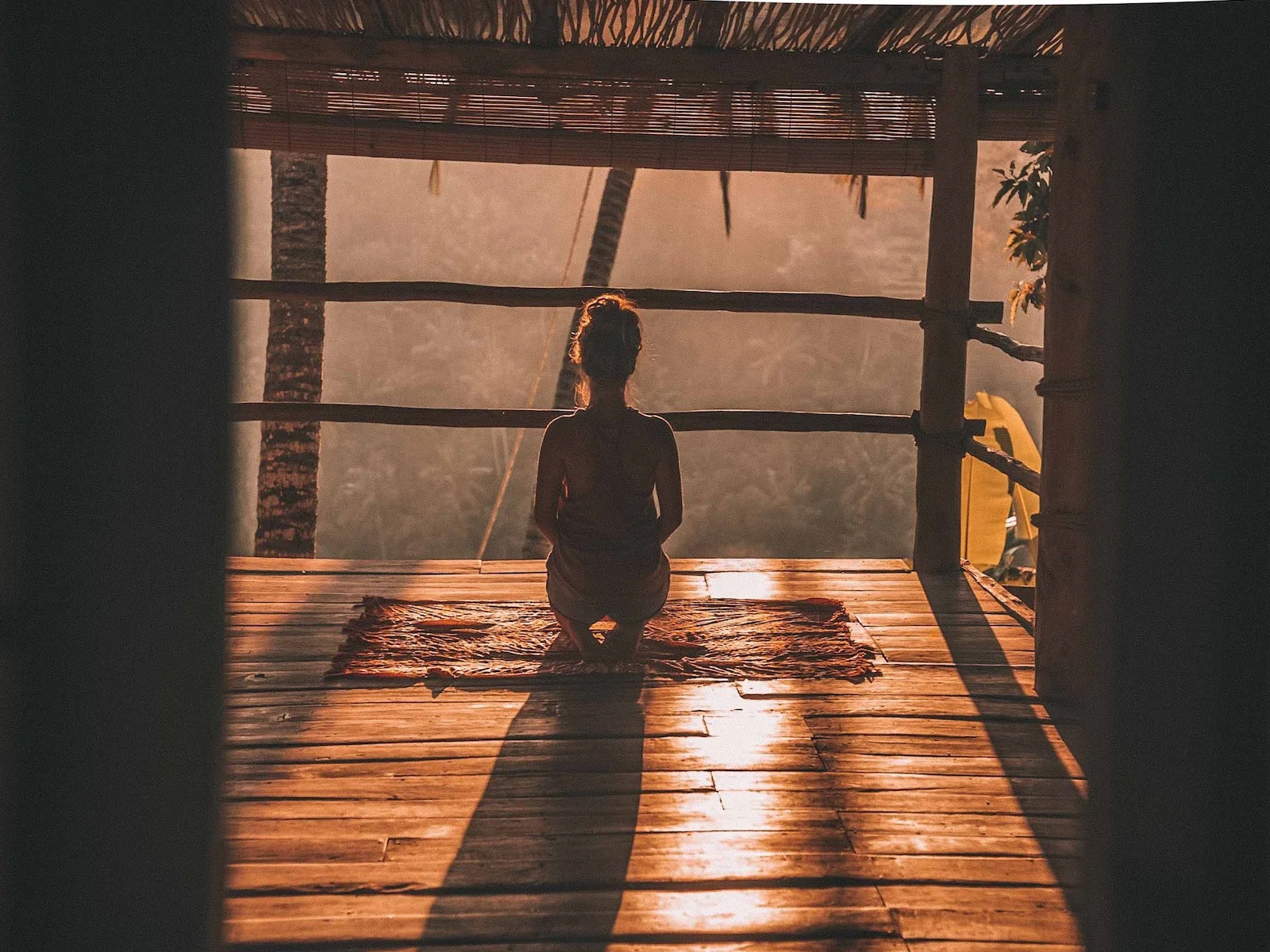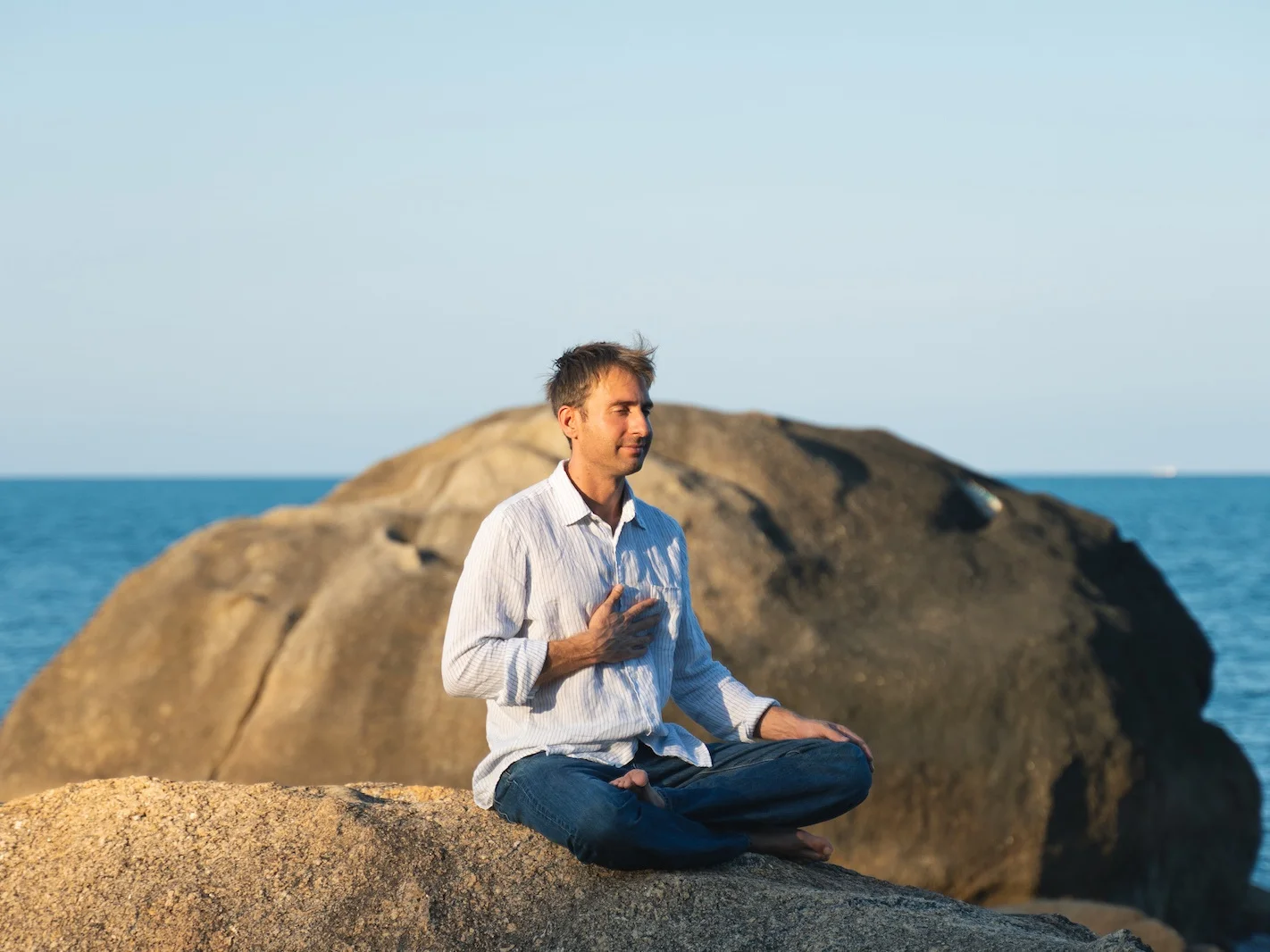How to Meditate
You want to start a meditation practice, but you don’t know where to begin, right?
This post is for you.
First thing to get clear about is: why are you interested in meditation? What are you hoping to get out of this investment of your time?
Step 1: Write down why you’re interested in meditation. Don’t just keep these thoughts in your head. Put them on paper...or in a Google Doc.
Don’t judge or second guess yourself for the reasons that you come up with. Whatever ideas you generate, just write them down, without judgment...now you’re already starting to practice mindfulness, for this practice invites us to observe whatever is happening in the present moment without judgment.
The act of writing down your reasons will not only enhance your awareness about your intentions for practicing but also your likelihood to commit to practicing meditation. You’re taking action.
Step 2: Set an intention for practicing meditation. After you’ve written your thoughts down, read through them carefully. Identify 2-3 of the most important reasons that really stand out. It might be something really important and pressing, such as “better sleep” or “reduced feelings of stress.”
Look for associations between different ideas that might connect to a common theme. For example, if you notice that “better sleep,” “stress reduction,” and “time for myself” are three reasons for wanting to meditate you might note “self care” as a larger, underlying principle.
Step 3: Commit to a particular style of meditation.
In the early phases of your journey, be open to different styles of meditation. I recommend exploration. Don’t try a new practice every night. Commit to one particular style for 3-4 weeks. If it’s resonating then just stick with it.
If you find that you’re really not enjoying the process, then try a new style of meditation. To really reap the benefits of meditation you’ll need to practice it consistently and if you’re going to practice it consistently it’s best find a style and approach that you will genuinely enjoy.
Personally, I’ve experimented with many different styles of meditation, which has helped to me to contextualize different traditions and practices. I can still draw on various practices from different traditions now but I’m able to do so because I’ve come to appreciate both the strengths and limitations of each practice, at least for me. This has given me a sense of which kind of practice I might want to use at a particular time and place.
For most people who are new to meditation, I recommend mindfulness meditation as the best place to start. I teach mindfulness in a way that is secular and a science of the mind and can appeal to anyone, regardless of their religious background.
Hint: if you can bring a spirit of curiosity to meditation, if you can find genuine amusement in how your mind works--including how quickly it will create stories and fantasies to delude you and take you out of the present moment--then this can help you really come to enjoy the process.
4) Commit to practicing every day for a set amount of time.
Meditation is a relationship--with your own heart and mind, with other people in your life, with nature. Relationships involve commitments. If you want to get anything out of your meditation practice you need to commit to it and to practice every day.
Consistency is the key. Better to do 10 minutes every day than an hour once a week. I think a great goal to work towards is 20-30 minutes for dedicated time for meditation practice (this can be seated, standing or walking). I meditation for 30 minutes, twice a day: first thing in the morning after some yoga and breathing exercises. Then also in the evening shortly before I go to bed.
Most importantly you establish a routine. Meditate at the same time every day.
5) Stick with your practice for your designated amount of time...no matter how bored or hungry or restless you get.
Again commitment is a theme: it’s really important that you commit to sitting for a set amount of time (whether that’s 5 minutes or 25 minutes) and once you make that commitment, you stick with it. No matter how bored you get, or what feelings of frustration or planning or hunger arise, just sit with them. Observe them without judgment, in fact watch them with curiosity, and see how they evolve into different sensations, feelings, emotions and thoughts.
Obviously, if you have any emergency like a screaming child in the next room or a house that’s on fire you get up! But barring these exceptional circumstances you commit to sitting for the duration of the period that you planned for. This trains the mind and the body to learn to be with what is rather than trying to change our circumstances every time we experience negative emotions.
6) Meditate in the same place every day.
Find a room in your home that can allows for maximum peace and quiet. It should also be a space that is psychologically associated with rest, and therefore if you have an office in your home don’t meditate in that space.
Even if you’re an atheist, I think there’s value in creating a “sacred space” in your home. It involve a very simple ritual like lighting a candle. As we prepare for meditation we are looking for ways to calm our nervous system, which will allow you to drop deeper into meditation, so little things pertaining to the design of the room that will facilitate these feelings of calm are a welcome ritual.
Perhaps you have a picture of a person, alive or dead, who inspires you. Meditation is really training our minds and hearts. Joy, calm, gratitude, compassion: these are absolutely qualities that you can cultivate. Having a picture of a person that embodies the qualities that you wish to see you in yourself can be a powerful tool for practice. It might be Gandhi; it might be your grandmother.
7) Establish a comfortable, steady posture
Note: I’m referring to seated meditation here and let me be clear that standing and walking meditation can be just as powerful. I’ll write about those techniques in subsequent posts.
For seated meditation here are a few tips:
Consider using a chair. You don’t have to sit cross legged on the floor. If you sit in a chair I definitely recommend a small pillow to provide support for your lumbar spine. I prefer a chair without armrests so that my arms can roll out to the sides but this isn’t a big deal.
If you’re able to sit on the floor, it can be great. It’s a chance to open your hips, which are getting tight all day from sitting in a chair. If you do sit on the floor, I would strongly recommend using a meditation cushion. Elevating your hips is critical to relieve pressure on the lower back. Personally, it doesn’t matter how much yoga I’ve done and how open my hips are, I still need a meditation cushion with some significant height to sit comfortably. This is true for most people in cultures who grew up sitting in chairs.
Putting support underneath your knees such as a small towel can relieve any pressure that gravity might exert on knees.
Have some kind of rug or (yoga) mat underneath your feet, or else your ankles and feed could get uncomfortable on a hardwood floor.
8) Practice with guided meditations
Why should you use a meditation app?
Meditation is a skilled practice that you need to learn from an experienced teacher. You need detailed instructions and guidance or else you will spend much of your time lost in thought. With a guided meditation you have the teacher’s voice gently reminding you to return your attention to the breath. Without such instructions you can spend several minutes daydreaming.
Thinking with your legs crossed on the floor is not meditation :) It’s just business as usual.
Download a meditation app to your phone. Here are the top ones that I would recommend:
10% Happier
Head Space
Waking Up
Personally, I use the 10% Happier App because the meditations are facilitated by some of my favorite meditation teachers, such as Joseph Goldstein and Sharon Salzberg.
I also offer a series of free guided meditations on my YouTube Channel: Adrian Baker Meditation.
9) Practice twice a day with two meditations: mindfulness and loving kindness
If you can commit to practicing twice a day, I’d strongly recommend practicing once a day with mindfulness meditation and the second practice with loving kindness.
In mindfulness meditation we are training our attention to simply notice what is happening in the present moment without judgment. Coming back into our bodies is an important part of grounding our attention and down regulating our nervous system. Mindfulness really is the foundation in that it simply invites us to pay attention to the changing nature of our experience.
When we realize how frequently phenomena is changing within our field of awareness, we start to become less reactive to it. Calm, clarity, wisdom: these are the qualities that begin to emerge in the spaciousness between thoughts.
But it’s also critical that we cultivate a particular quality to our attention: loving kindness and compassion are absolutely essential to the practice. As we begin to encounter challenging feelings and emotions and thoughts, we are able to relate to these in a more loving and compassionate way.
We’re training our hearts and minds to be kinder to ourselves and to others: to those we love and to those whom we might find challenging to deal with, such as a boss or a colleague or the person who just cut us off in traffic.
10) Have the right mindset
Finally, bringing the right mindset to your practice is critical. The most important thing is not to judge yourself. Meditation is not a competition. It’s not something you’re going to “fail at.” It’s a precious opportunity to come to know yourself, to become more self aware and emotionally intelligent, to heal your own heart and mind for the benefit of others and for yourself.
If there are three qualities to bring to your meditation practice I would say:
Be Open
Be Curious
Be Playful
Be open to whatever arises in your experience--thoughts, emotions, feelings--no matter how challenging. Welcome them. Watch them with fascination (the only exception to this rule is if you have PTSD).
Be curious about how your mind works. Instead of judging yourself for having thoughts have a feeling of fascinating for how the mind works: how sensations, turn into a feeling which turns into a thought with images then into a full blown story in which the mind becomes lost.
Be playful. Have fun. Sometimes I even laugh out loud at some of the absurdity of the stories that my mind comes up with. I don’t let myself get caught up in the laughter and come out of meditation but it can shift the feeling away from a negative emotion, like frustration.
One of the great gifts of meditation is learning to hold our beliefs more lightly, to take ourselves a bit less seriously, and, as a result, to live life more joyfully.
Stay tuned for my next post on what’s the most important thing to really advancing your meditation practice...




